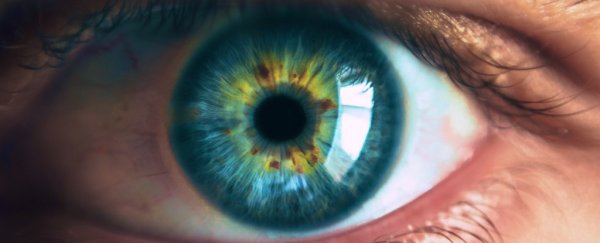In the field of infection, prions stand alone. Like bacteria or viruses, these mysterious pathogens spread like a deadly contagion inside the brain, somehow coercing healthy proteins to fold into twisted, sickly shapes.
This devastating, little-understood form of transmission has been linked to a range of rare but fatal neurodegenerative diseases. Now, new evidence is a reminder the brain isn't the only host of prions - they can also thrive in our eyes.
There are a number of ways you can contract prion-related diseases, collectively called transmissible spongiform encephalopathies. Some forms are hereditary, but you can also become infected by consuming tainted meat, or by being exposed to contaminated surgical equipment.
Another rare form of exposure is corneal graft operations, where patients become infected after receiving unknowingly contaminated corneal transplants from deceased donors who carried (but were never diagnosed with) Creutzfeldt-Jakob disease (CJD), the most common prion disease.
Investigations into such cases have demonstrated infectious prions can also lurk in people's eyes, but the extent remained largely unknown up until now.
"We wanted to know how often prions are deposited in the eye, as well as the distribution and levels of prions in the eye," explains pathologist Christina Sigurdson at the University of California, San Diego.
Careful what you wish for. When Sigurdson and fellow researchers examined the eyes of 11 deceased patients who died with the non-hereditary, sporadic form of CJD (sCJD), they found the dead organs were riddled with prions on a scale never before seen – spread throughout the retina, cornea, optic nerve, lens, sclera, and elsewhere.
Using a highly sensitive prion seeding assay technique called real-time quaking induced conversion (RT-QuIC), the team found prions dispersed throughout all of the eyes analysed in the study, with the highest levels seeded in the retina.
How the prions get into the eye in the first place isn't fully understood, with the researchers pointing out it's possible they could spread from a prion-infected brain into the retina via transport in the optic nerve.
The other possibility is the threat of an infection originating via contact with the eye itself, most likely in the form of eye operations that transmit the prions, perhaps by surgical tools that haven't been effectively sterilised.
"Surgeons could unknowingly contaminate their instruments with prions," Sigurdson says.
In that sense, the findings are a mixed bag. Now that we know prions spread throughout the eye like this, it could potentially help us to detect the pathogens sooner in patients – but it also suggests an infection vector we weren't aware of before now.
"Collectively, these results reveal that sCJD patients accumulate prion seeds throughout the eye, indicating the potential diagnostic utility as well as a possible biohazard," the authors write in their paper.
The next step, Sigurdson says, is to develop diagnostic tests that can exploit these findings, possibly by analysing the tears of CJD patients to see whether the pathogens are present.
If they are, it could help us find the pathogens early – which, in some cases, are hypothesised to silently spread for decades in unaware patients.
"It really suggests we could develop a diagnostic, eye-based assay," Sigurdson says.
"Ultimately we would like to develop new treatment strategies to stop prions from spreading."
The findings are reported in mBio.
